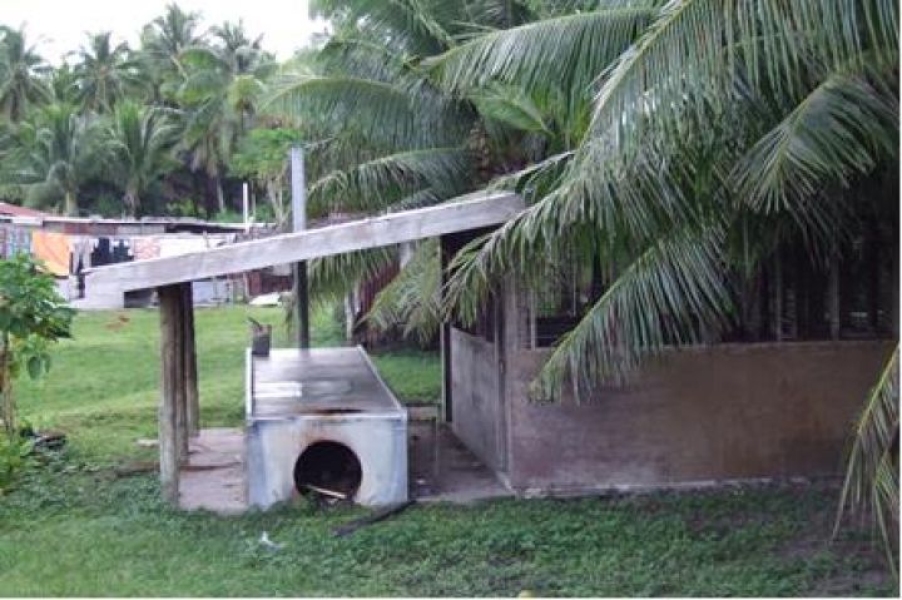NIWA worked with the community on the island of Totoya, in the Yasayasa Moala Island group in south-east Fiji to assess their energy security and energy related socio-economic opportunities.
Overview
It is well recognised that access to energy has a significant influence on the socio-economic well-being of isolated communities in the Pacific and can lead to improvements in household health, education and income. Despite the potential of renewable energy sources, most Pacific countries are dependent on imported fossil fuels for electricity generation. This results in a very high cost to supply and maintain electricity to island communities away from the main urban centres.
The island of Totoya is located in the Yasayasa Moala Island group in south-east Fiji. The four village communities live a predominantly subsistence lifestyle with the main income earning activities the cutting of copra and the weaving of mats. Electricity is currently provided by diesel generator with fuel and maintenance costs met by the community. The benefits of this system for the community are limited by the frequent breakdowns and limited funds for fuel purchase.
Pacific Blue Foundation (PBF) commissioned NIWA to determine energy use and requirements on Totoya and assess the potential for renewable energy solutions to improve economic conditions for Totoya and the wider Yasayasa Moala island group.
Approach
In order to understand the energy challenges and opportunities of the residents of Totoya Island, a field survey was undertaken which covered: Demographics, Lighting, Household electric appliances, Cooking facilities, Fuel use, Energy issues, Electricity supply options, Community needs, Island development options.
The survey revealled that a very large proportion (>60%) of household income was spent on the purchase of imported fossil fuels, and that there was plenty of opportunity to increase revenue from the sale of copra and copra products.
Future opportunities were considered by reviewing different opportunities associated with the various potential indigenous energy sources: Solar (heat and electricity), Wind, Biofuel, Wastewater, Hydro etc. The review paid particular focus on how these energy sources could be used to either enhance lifestyle or economic potential.
The economics of some of the preferred solutions where developed as case studies.
Outcome
The population of Totoya is declining, despite a high birth rate. The residents of Totoya Island live a traditional lifestyle, where most necessities of life are sourced from the land. The predominant income earning activities are cutting copra and weaving mats. Much of this income (>60%) is spent on fuel purchases. These fuels are inefficiently used for outboard engines, cooking and lighting.
Cooking is predominantly done using firewood on open stoves. Although there is plenty of firewood available, cooking would be faster and negative health impacts reduced, if the community stored wood under cover i.e. used dry wood, and used more efficient stoves e.g. rocket stove that has recently been introduced.
The electricity systems on the island all utilise significantly oversized diesel generators, with fuel and maintenance costs being covered by the village that they served. It appears that the primary cause of failure was the inability of communities to raise sufficient funds when 1 - 2 households withdrew from the scheme. Simple per household solar electricity systems could fulfil Totoya’s most important electricity needs in a cost effective way.
Potential coconut production signficantly exceeds (up to ten times greater) current production. The volume of export is constrained by the lack of shipping services. Economic opportunities include:
- using solar driers at plantation sites to enable transport of large volumes more efficiently
- upgrading copra to coconut oil using hydraulic press and solar drying
- using coconut oil as a biofuel
- upgradig coconut oil to high value products
- increasing trade via addition of sailing boat or efficient bulk cargo vessel.
Based on our analysis, some of the better opportunities were associated with rocket stoves, individual solar photovoltaic systems and solar copra driers.
External People Involved
Andreas Hamm
Rilke de Vos

